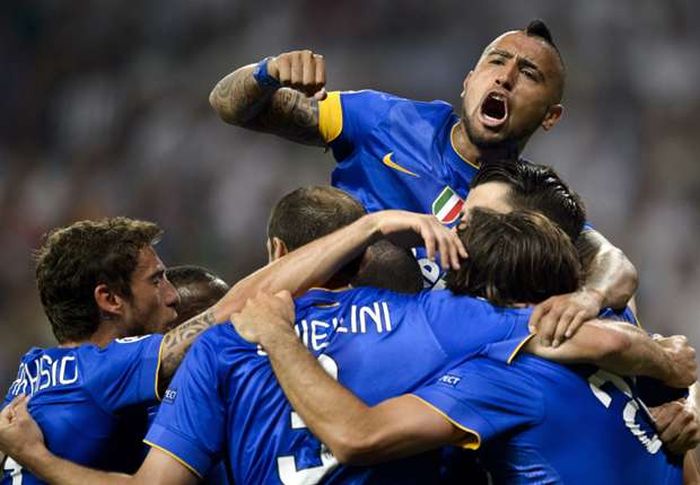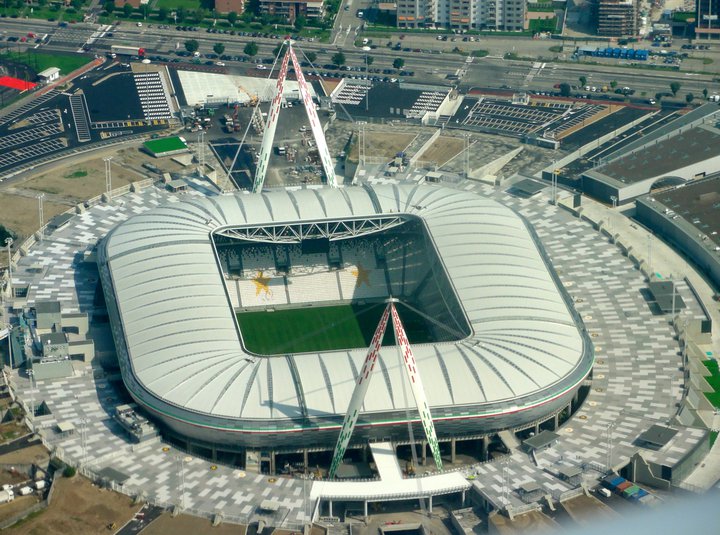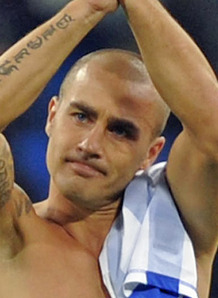Thirty years ago, on May 29, 1985, I gathered with a dozen teammates in a living room in Rome to watch the European Cup final between my Juventus and Liverpool. Barely fifteen years old, black-and-white scarf around my neck, there was nothing more I wanted than to avenge our shocking loss to Hamburg in the final two years earlier.
There was reason to be moderately optimistic, partly because four months earlier we had beaten Liverpool 2-0 (Boniek 39′, 79′) to claim the 1984 European Super Cup.
Forty-five minutes or so before the scheduled kickoff in Brussels, I took my seat on the floor. A perfectly unobstructed view of the television screen. Within minutes, disturbing images of chaos at the run down Heysel Stadium started beaming in.
The voice of Bruno Pizzul, a kind of Martin Tyler of Italian football, conveyed bewildering news. Something terrible was unfolding. Death at the stadium? We switched on the radio. Confusion.
Then, slowly, an accumulation of anecdotal reports led to confirmation of an unspeakable tragedy: 36 people were dead (a figure later revised to 39). Almost all Juventus fans. Men, women, and children killed in a stampede and wall collapse in the corner Z sector as they fled a charge by Liverpool supporters.
My heart was in my throat.
Tag: Juventus
Juve and Me

[iOS users click here to listen.]
Juventus, the Old Lady of Italian football, is in the Champions League final for the first time since 2003. In an interview I did a year ago with Austin Long for the Soccer Nomad podcast, I explain how I came to support the bianconeri in the mid-1970s despite being from Rome.
Since I did not live in Turin, I supported Juve from afar and became religiously devoted to Michel Platini and, years later, to Roberto Baggio.
A day after eliminating Real Madrid to earn a date against Barcelona on June 6 in Berlin, it’s funny to hear my rational, realistic assessment of Juve’s prospects for success in Europe alongside my thoroughly irrational dream of winning the European Cup like Milan did in ’94–by thrashing Barca 4-0!
Juventus Stadium: Changing Calcio

Although I was born and raised in Rome, I support Juve. My choice was based on the need to find a club that could compete with AC Milan and Inter, my older brothers’ favorite teams. I was barely six years old when I first saw Juve play. It was in Perugia (my father’s team) and “we” somehow lost 0-1 thanks to a goal by Renato Curi. As a result, Torino won the scudetto. What a tragedy! But the real tragedy happened a year later when I returned to Perugia hoping for a better Juve performance: Curi collapsed on the pitch and died of a heart attack. Talk about putting things in perspective.
Over the next decade, I watched Juve “under cover” at the Olimpico against Roma and Lazio, and in other cities as well. It could be dangerous. At Marassi stadium, for instance, Genoa’s ultras invaded our curva (end) wielding broken bottles. When all was said and done, a guy two rows in front of me was oozing blood from a stab wound in his leg. Surely it would have been safer in Turin, but as a young teenager living more than 400 miles away it was tough to make the pilgrimage to the Stadio Comunale. And after I moved to the United States in the mid-1980s, it seemed as if I had been sentenced to never attend a Juve “home” match. A victim of contrappasso for my act of betrayal of Roma and Lazio?
The inauguration of Juve’s new stadium is inspiring me to finally make the journey to Turin.
September 8, 2011, heralds the arrival of a new era in Italian football, or calcio as we call it. Juve’s friendly against Notts County — the club responsible for the Old Lady’s adoption of black-and-white kits — marks the first time an Italian club will play in its privately owned stadium.
It is a welcoming football-specific stadium: no track, no moat, no fence. It has a capacity of 41,000 seats and a design similar to many English Premier League grounds. Juve’s stadium provides a long-awaited alternative to overpriced, under-serviced, militarized, and outdated grounds found all over the peninsula. It rises on the ashes of its cursed predecessor, the Delle Alpi. Built on the outskirts of Turin for the 1990 World Cup, Delle Alpi stadium was twice as expensive as originally planned, featured terrible sight lines (largely due to a never-used running track), a bumpy playing surface, and abominably high maintenance costs. In 2003 Juve took it over from the city under a 99-year lease and demolition started in 2008. In the meantime, both Juve and Torino relocated to the downsized ex-Comunale stadium, renamed Olimpico after hosting the inaugural and closing ceremonies for the 2006 Winter Olympics.
Looking at the calendar, I could make the Piedmont derby between Juve and Novara on December 18 . . .
For a virtual tour of the new stadium click here. For videos documenting the construction process go here, here, here, here, here, here, and here.

The Old Lady of Italian football was humiliated 0-3 by struggling Udinese this weekend, making it 12 losses and 47 goals against in 32 serie A matches this season. After this latest embarrassment, the formerly powerful and prestigious Juventus FC apologized to millions of fans and began a ‘silenzio stampa’ (no media interviews until further notice).
Yet Marcello Lippi continues to live in an alternate universe and appears ready to go to South Africa with between half and two-thirds of the Azzurri’s starting 11 from Juve’s ranks. Tired pensioners like Cannavaro, Legrottaglie, Camoranesi and Grosso are like a concrete block around Italy’s neck. Unless Lippi has a last-minute change-of-heart, then expect the Azzurri to sink fast come June.